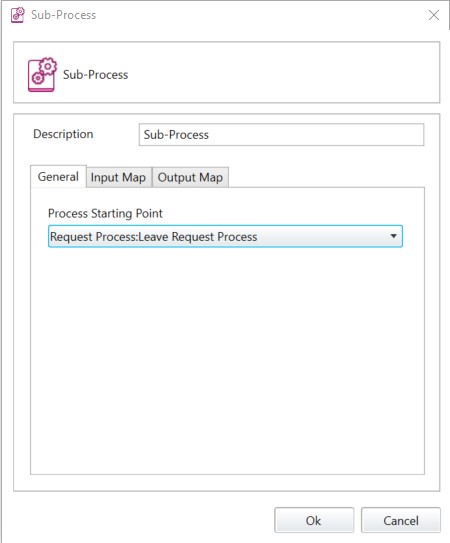

All processes must include at least one initiation point or action. Actions can contain multiple initiation actions, even as multiple actions of the same type.
The Split Action allows actions that are linked but do not need each other to complete simultaneously. draw multiple links from the outward arrow connector of the Split Action.
The Merge Action expects all previous actions to be completed to continue the next action.Multiple actions can be linked to the inward arrow connector of the merge action. When using the merge actions, be careful to ensure that each of the arrival paths can be completed.
[Specific Note: If you use the same data element in multiple parallel actions, the value in the latest action will be valid.]
The Include Action works similar to the “The Merge” action, except that it merges multiple paths in a single path. For each path involved in the Include Action, the line is followed. The Include actions are generally used when mutually exclusive paths should be combined. (Like the paths out of decision action). Mutually exclusive paths are combined and sent to the Merge action.
The Decision Action separates the process flow into any of two directions ( Yes / No) depending on the result of the statement. Decisions are used to control the particular features and conditions of processes and change the flow of process depending on the result.
It defines the statement to be checked. Process data may be used in the calculation.In this case, if the system returns a numerical value as a result of the calculation, any number except for zero is considered as “Yes” while zero is considered as “No”.
The Delay Action stops the execution / run path for a specified time stipulated by the Delay or Duration option.
Sending E-mail creates an electronic mail and sent to one or multiple receivers. The text message can contain process data and file attachments if required.
It determines the e-mail address to be used in the From field of the e-mail.
Each field can contain multiple recipients separated by zero or commas.
The recipients can be specific e-mail addresses, a user or user group, or an e-mail address from data elements as defined in server security.
| Address Type | The reason to use? | Examples |
|---|---|---|
| Fixed Address | When you want to send an e-mail to a particular e-mail address, | info@nold.trnetteknoloji.com.tr iletisim@flypgs.com |
| Grup veya Birey; Group or Individual Enclose the Group or User name in parentheses. Sending mail to E-Flow User or User Group | Sending mail to E-Flow user | [Özgür EROL] [Account] [Supervisor] |
| Data Element; Put a “%” sign before and after the Data Item ID. | Put a “%” sign before and after the Data Item ID. | %user_email% %reply_address% |
Child Process Actions allow one process (parent process) to run a second process (sub process) The parent process expects sub process to be completed before continuing. Parent and child processes can transfer data to each other when the child process starts to run and is completed.
If you want parent process to continue when the child process is on run, add a split / separate action to the parent process before running the child action.

The Terminating Action marks the end of the process execution / operation path. In case of other paths active in the process, they will continue to run until a terminating action hits. The process is completed only when all run / execution paths have been terminated.